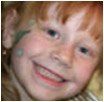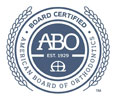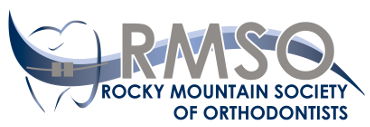Orthodontic Treatments
The Classification of bites is divided into three main categories: Class I, II and III. This classification is based upon the relationship of upper to lower first molars.
Missing or Impacted teeth. Missing teeth can be inherited (congenital) or due due to trauma while Impacted teeth can be caused by delayed loss of baby teeth, severe crowding of the un-erupted teeth such as from a narrow upper jaw, or from irregular/ectopic development of the growing tooth bud. Impacted and missing teeth can be corrected orthodontically.
Crowding and Spacing are two of the more common malocclusions. Crowding is the generally due to a discrepancy in the size of the teeth versus the size of the arch/jaw though there can be localized crowding from an abnormal eruption pattern or delayed loss of baby teeth. Spacing is present when the teeth in whole are smaller than the arch/jaw; this can be from a large jaw, small teeth or combination of both. local spacing can be from thick gingival tissue, extra teeth under the gumline, or a malformed tooth. Both can be corrected with braces, sometime requiring extraction of teeth (severe crowding) and sometimes by restoring teeth to a more normal size (localized spacing). More typically though, mild to moderate crowding and spacing can be corrected by moving the teeth and aligning them within the arch and aligning them to fit and function with opposing teeth.
Crossbite is a term that describes when upper teeth are inside the lower teeth. It can be from a discrepancy in the size of bones (narrow upper jaw/wide lower jaw) or it can be more localized due to one or more teeth angled poorly, perhaps from late loss of baby teeth. Narrow upper jaw can in turn be from chronic allergies and mouth breathing to oral habits such as sucking on a finger. Other developmental issues such as clefts will also lead to an under-developed upper jaw. Crossbites can lead to excessive wear on teeth, chronic jaw dislocation and eventually TMD jaw pain; crossbites are best corrected as a pre-adolecent, age 6 to 9. Orthodontist will use braces, an expander or a combination of both to correct depending on age and severity. Adults may require surgery to correct a crossbite so best to treat as a child
Early intervention (treatment) is necessary for children who need an early correction to affect later eruptions and development. Many severe problems later as teens and adults begin as smaller discrepancies early in development. For instance expansions corrects an early crossbite and as a side effect, the arch is now larger and future teeth erupt straighter (and teeth that may become impacted now have room to erupt). Early treatment is essential to correcting underbites and severe overjet but can also prevent impaction of teeth and provide more stable long-term corrections.
Openbite is a vertical malocclussion seen when upper teeth and lower teeth do not touch. Openbites are normally from adverse tongue and finger habits but they can also occur as a result of excessive growth in different areas of the jaws. Early openbites can be corrected with expanders and/or limited braces but as teens become adults, it can become impossible to correct and hold such a correction. Open bites can be the most challenging malocclusion for orthodontists to correct and stabilize.
Overbite (or deepbite) is a term that describes when the lower teeth bite up high behind the upper front teeth, many times where you cannot see the lower incisors at all. These deepbites can cause excessive wear, distal dislocation of the mandible and make future restoration very challenging. Correction requires braces to ”intrude” lower front teeth or “extrude” posterior teeth.
Overjet (buck-teeth) describes a discrepancy between upper and lower incisors where upper teeth develop out in front of the lower teeth. This can be a result of digit sucking, adverse tongue pressure (especially during swallowing) or a recessed/under-developed lower jaw. Correction is based on why there is overjet, age if the patient (the younger the better), and if there is also crowding in one or both arches. Braces are required.
Underbite is the opposite of overjet; It is when the lower teeth push out past the front teeth. These patients must be seen early to determine if the malocclusion is skeletal or dental in nature. Skeletal underbites can be corrected early with expansion and protraction headgear or an orthodontist may employ Techniques to alter development or they may require surgery and/or extraction of teeth. Braces will be required.





